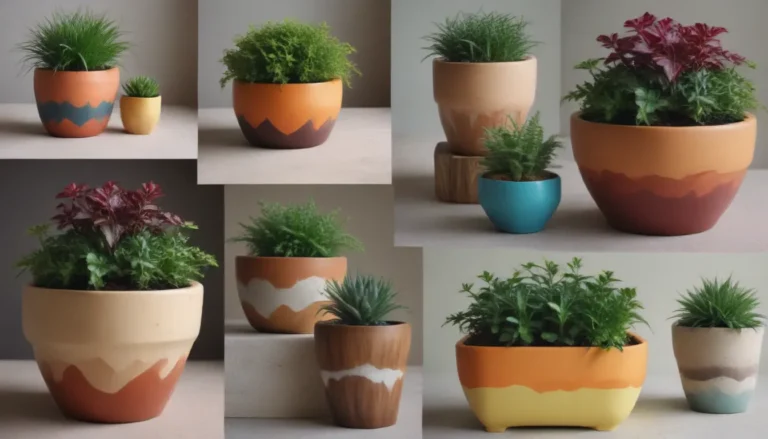Comprehensive Guide to Soil Amendments: Everything You Need to Know

Gardening is a dynamic and rewarding activity, but the quality of your soil can greatly impact the success of your plants. Most soils could benefit from a little extra help, and that’s where soil amendments come in. These additives can improve soil structure, increase nutrients, and enhance water retention, creating the ideal environment for your plants to thrive. In this in-depth guide, we will explore common soil amendments, their uses, and how you can incorporate them into your gardening routine for optimum results.
Understanding Soil Amendments: An Overview
Before diving into the world of soil amendments, it’s important to understand what they are and why they are essential for successful gardening. Soil amendments are materials added to soil to improve its physical properties, nutrient content, and overall health. While fertilizers provide plants with essential nutrients, soil amendments focus on improving the soil itself, creating a healthy foundation for plant growth.
Ideal soil is rich in nutrients, well-draining, and retains enough water for plants to thrive. However, most garden soils fall short of this perfect balance. Soil amendments can help address these deficiencies, creating an optimal growing environment for your plants.
Common Soil Amendments and Their Uses
Coconut Coir
- Description: This fibrous material is extracted from the outer husk of coconuts.
- Benefits: Coconut coir improves soil water retention and nutrient absorption, making it ideal for sandy soils.
- Best for: Sandy soil
Compost
- Description: Compost is a nutrient-rich material created from decomposed organic matter.
- Benefits: Improves soil structure, adds nutrients, and promotes root growth.
- Best for: Any soil lacking organic matter, including clay, sandy, and silty soils.
Vermiculite
- Description: Finely crushed mineral flakes that aid in water and nutrient retention.
- Benefits: Promotes root growth and anchoring of young roots.
- Best for: Sandy soil
Sawdust
- Description: Well-decayed wood material that can improve soil structure.
- Benefits: Helps aerate clay and compacted soils, but should be used sparingly to prevent nitrogen tie-up.
- Best for: Clay soil and hard, compacted soils
Perlite
- Description: Crushed volcanic material that enhances soil aeration and drainage.
- Benefits: Improves soil structure and is ideal for clay soils.
- Best for: Clay soil
Sand
- Description: Coarse builder’s sand that aids in drainage.
- Benefits: Not suitable for clay soil but beneficial for potted plants.
- Best for: Potted succulents
Straw
- Description: Inexpensive material that improves soil structure and aeration.
- Benefits: Enhances soil porosity and provides energy for micro-organisms.
- Best for: Clay soil
Wood Bark and Chips
- Description: Shredded wood material that aerates dense soils and stabilizes loose soils.
- Benefits: Creates space for roots, water, and nutrients to move through the soil.
- Best for: Clay and silty soils
Sulfur
- Description: Soil acidifier that lowers pH and improves nutrient availability.
- Benefits: Ideal for alkaline soils and acid-loving plants.
- Best for: Alkaline soil
Blood Meal
- Description: Dried animal blood high in nitrogen.
- Benefits: Provides extra nitrogen for plants with lush foliage.
- Best for: Green leafy vegetables, ferns, and nitrogen-deficient plants.
Bone Meal
- Description: Ground animal bones that add phosphorus and calcium to the soil.
- Benefits: Stimulates fruit and bloom growth, preventing blossom end rot in tomatoes.
- Best for: Vegetables, tubers, flowers, and bulbs
Manure
- Description: Organic material rich in nutrients and organic matter.
- Benefits: Improves water retention and nutrient availability, but must be composted.
- Best for: All soil types, especially sandy and silty soils
Garden Lime
- Description: Rock powder that makes soil more alkaline.
- Benefits: Corrects acidic soil conditions and enhances nutrient availability.
- Best for: Highly acidic soil and alkaline-loving plants
Pea Gravel
- Description: Jagged-edged gravel that improves soil aeration and stability.
- Benefits: Opens up spaces for roots, water, and nutrients to move through clay soils.
- Best for: Clay and silty soils
Wood Ashes
- Description: Fireplace ashes that elevate soil pH and add nutrients.
- Benefits: Low-cost alternative to garden lime but should be used in moderation.
- Best for: Highly acidic soil
Worm Castings
- Description: Earthworm excrement rich in nutrients and microorganisms.
- Benefits: Enhances soil structure, water retention, and nutrient uptake.
- Best for: All soil types, including potted plants
Aluminum Sulfate
- Description: pH-lowering agent that improves nutrient availability.
- Benefits: Ideal for alkaline soils and acid-loving plants like blueberries.
- Best for: Alkaline soil
Ammonium Sulfate
- Description: Acidifies soil while adding nitrogen.
- Benefits: Benefits plants with foliage growth in alkaline soils.
- Best for: Alkaline soil
Cottonseed Meal
- Description: Slow-release nitrogen source from cottonseed production.
- Benefits: Ideal for trees, shrubs, and perennial beds.
- Best for: Nitrogen-deficient soils
Greensand
- Description: Iron-rich mineral that loosens clay soils and improves water retention.
- Benefits: Adds essential plant micronutrients and enhances soil quality.
- Best for: Flower beds, gardens, and lawns
Kelp Meal
- Description: Dried and ground seaweed supplement with nitrogen and potash.
- Benefits: Supplements other soil amendments and enhances plant growth.
- Best for: Flowers, trees, and vegetable gardens
Alfalfa Meal
- Description: Ground-up alfalfa plants high in nitrogen.
- Benefits: Provides nitrogen boost to soil but should be used sparingly.
- Best for: Vegetable gardens and nitrogen-deficient soils
Rock Phosphate
- Description: Pelletized phosphate source derived from soft rock.
- Benefits: Promotes blooming and root growth in flowering plants.
- Best for: Flowering plants and root development
What Soil Amendments to Avoid
While there are many beneficial soil amendments available, some common products may not be the best choice for your garden. Here are a few amendments to avoid:
– Gypsum
– Peat moss
– Shredded rubber
It’s essential to carefully select soil amendments that align with your garden’s needs and avoid those that may have negative consequences on soil health.
Fertilizers vs. Soil Amendments
It’s important to distinguish between fertilizers and soil amendments when caring for your garden. While both play a crucial role in plant growth, they serve different purposes:
– Fertilizers: Concentrated plant food that provides essential nutrients to plants.
– Soil Amendments: Improve soil structure, nutrient content, and overall soil health.
By incorporating both fertilizers and soil amendments into your gardening routine, you can create a balanced and fertile environment for your plants to thrive.
Incorporating Soil Amendments into Your Garden
Adding soil amendments to your garden is a simple yet impactful way to improve soil quality and plant health. Here are a few tips for incorporating amendments effectively:
1. Test Your Soil: Before adding any amendments, conduct a soil test to determine your soil’s nutrient content and pH levels.
2. Select the Right Amendments: Choose soil amendments based on your soil’s specific needs and the requirements of your plants.
3. Follow Application Guidelines: Apply amendments according to recommended rates and methods to avoid over-application or nutrient imbalances.
4. Monitor Plant Health: Keep an eye on your plants’ growth and health after adding amendments to ensure they are benefiting from the improved soil conditions.
By following these steps, you can effectively enhance your garden’s soil health and create an environment where your plants can thrive.
Conclusion
Soil amendments play a vital role in creating a healthy and productive garden. By understanding the different types of amendments available and their unique benefits, you can tailor your soil treatment to meet your plants’ specific needs. Whether you’re looking to improve soil structure, boost nutrient availability, or enhance water retention, there is a soil amendment out there to help you achieve your gardening goals. Incorporate these valuable additions into your garden routine, and watch your plants flourish in nutrient-rich and well-balanced soil.
For more information on soil amendments and gardening tips, refer to resources like:
– Colorado State University Extension
– University of Maryland Extension
– New Hampshire Cooperative Extension
– Washington State University
Remember, healthy soil is the foundation of a successful garden. By incorporating soil amendments into your gardening practices, you can create a thriving environment where your plants can reach their full potential. Happy gardening!





